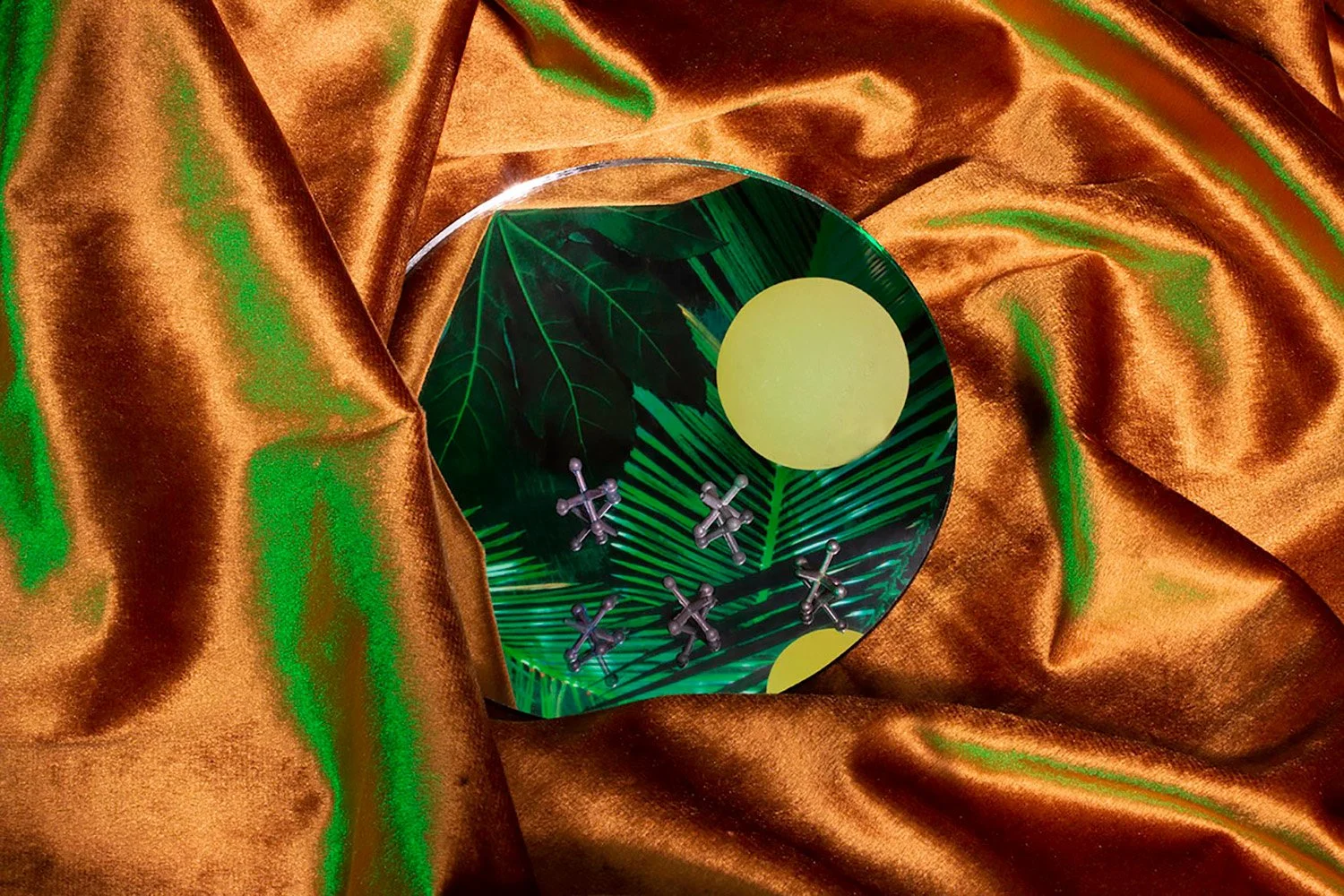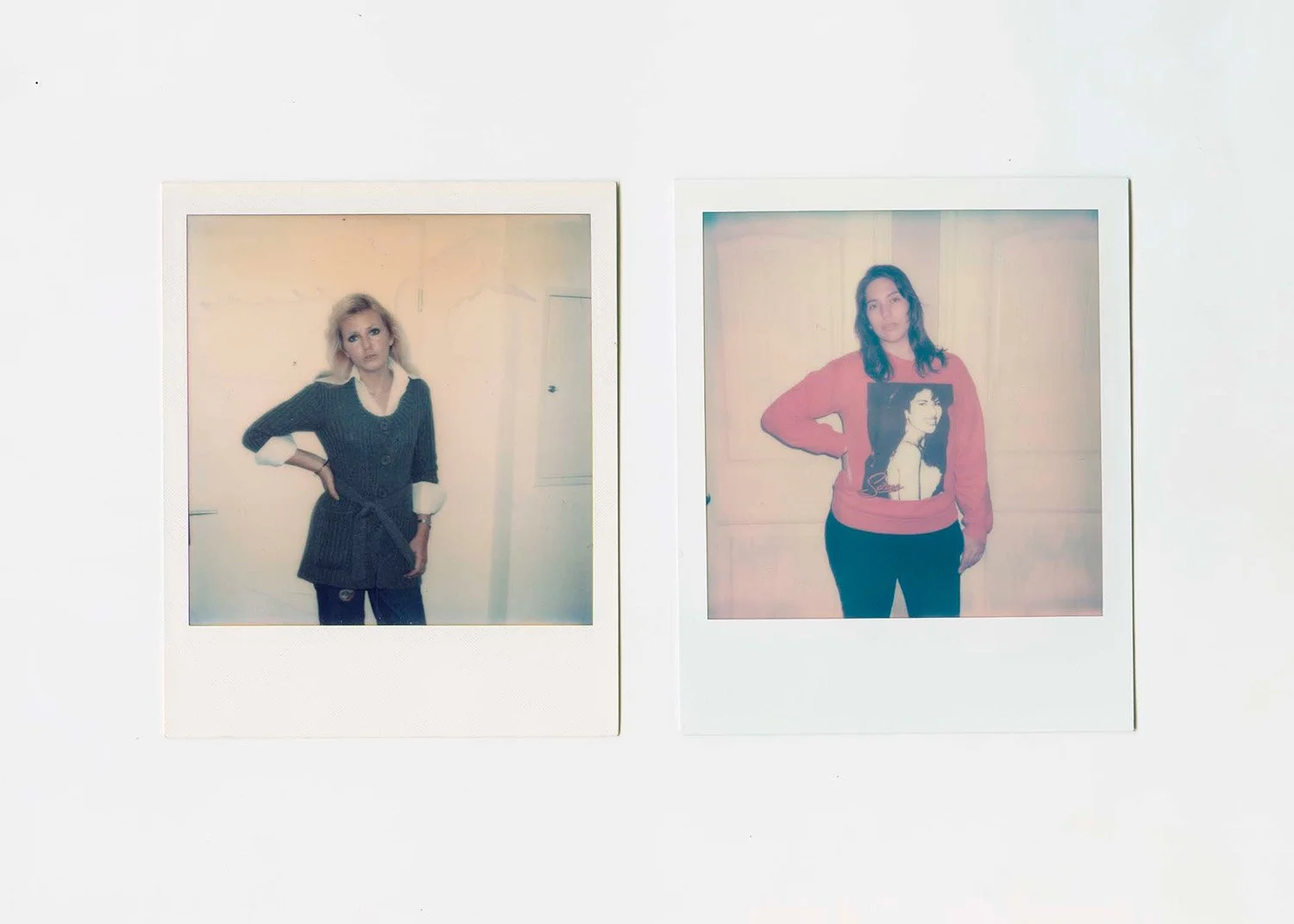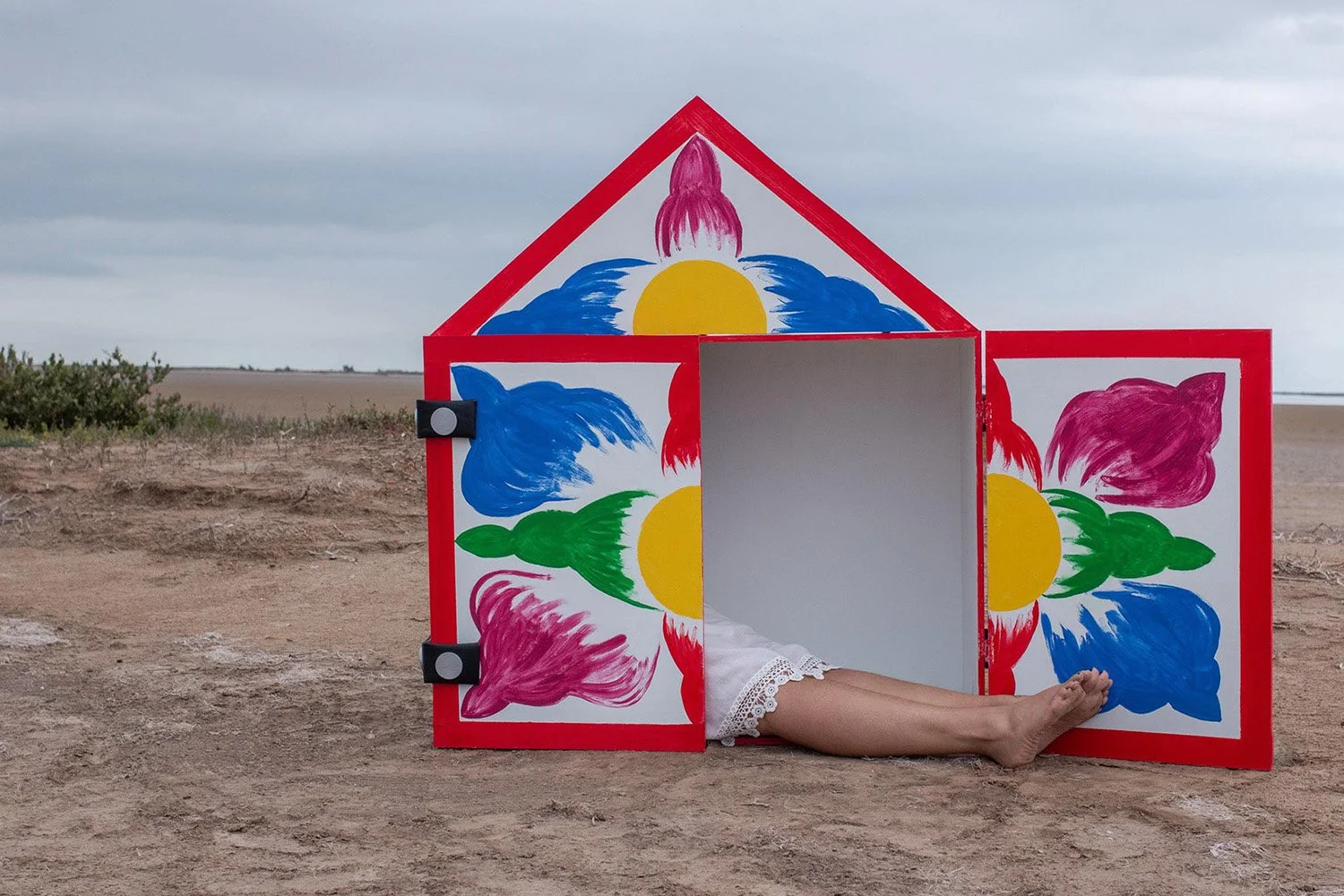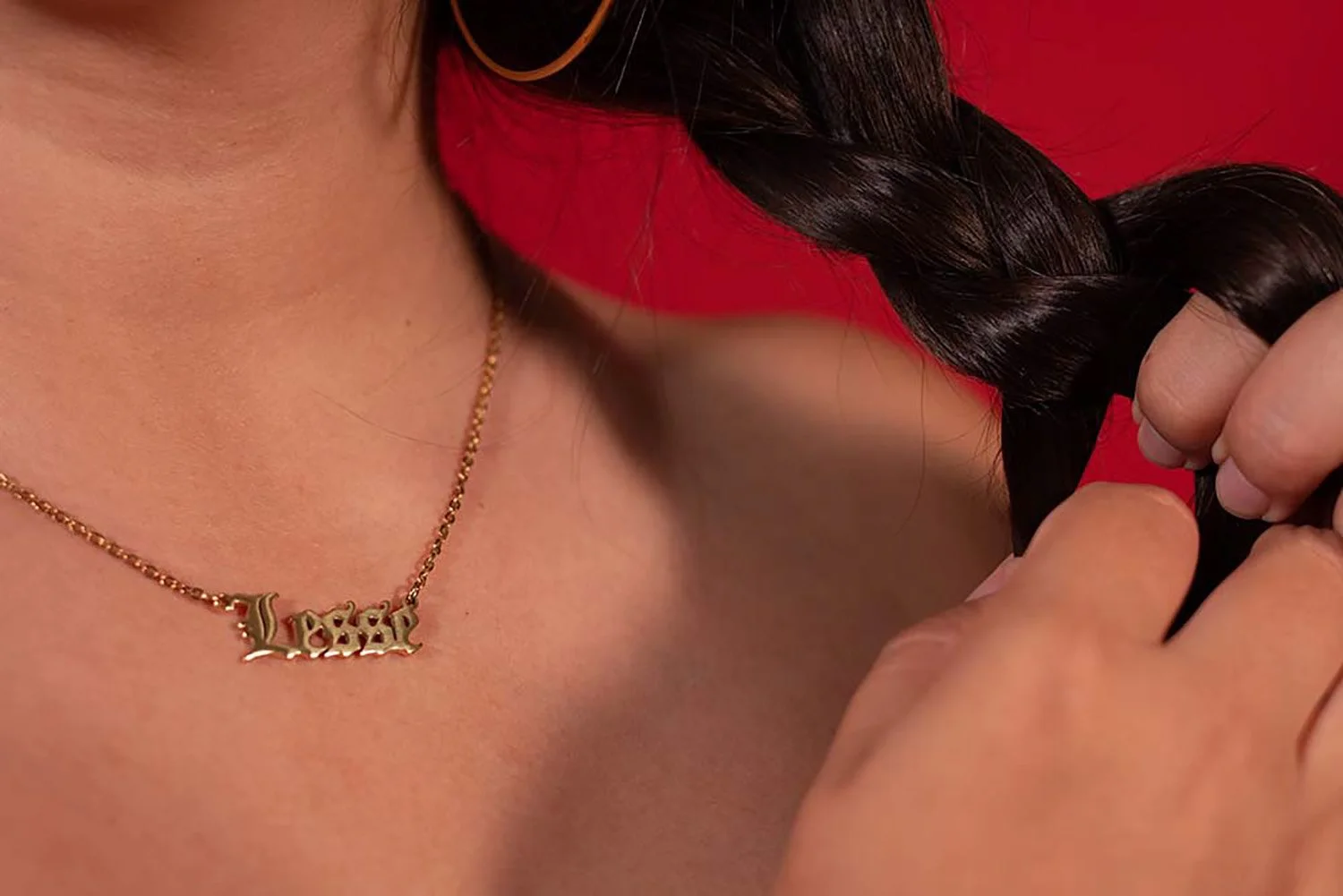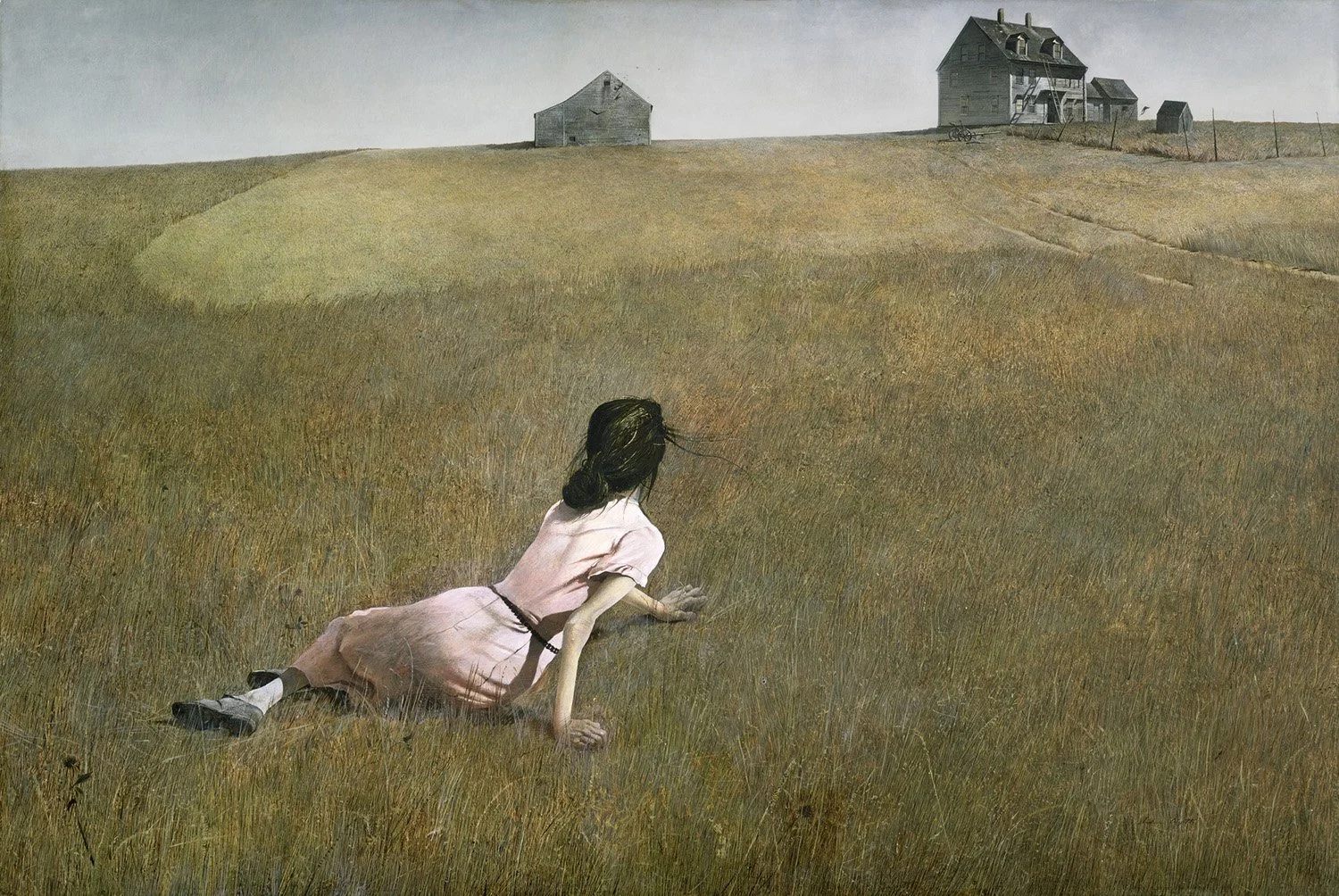Making It In America © Chantal Lesley
Austin, Texas -based photographer Chantal Lesley’s latest project En Medio de la Nostalgia presents a fractured story and asks the question: “What defines a person’s identity when many cultures are involved?”
Chantal Lesley uses self-portraits, staged images, and manipulated family photographs to look at the many layers of family and cultural history. “Is there one that dominates above the rest,” she asks, “or can they all live within someone harmoniously?”
In the project's title photograph "In the Midst of My Nostalgia," for example, Lesley casts herself as the figure in Andrew Wyeth's famous painting "Christina's World," which depicts his polio-stricken neighbor on a Maine landscape - struggling with dignity despite her condition. Where Wyeth's intention was to "do justice to her extraordinary conquest for life," Lesley inserts her own struggle for hope. In place of Wyeth's dreamy field and romantic Maine barn, she casts herself looking at a border wall.
This is just one of many images that create a piecemeal narrative to reflect this in-between state. Each image ultimately ponders the evaporation of ethnic roots can create an isolating and confused sense of self.
I spoke with the artist to learn more about how her process attempts to make sense of this journey.
Jon Feinstein in conversation with Chantal Lesley
Portrait of my Mother as a Child © Chantal Lesley
Jon Feinstein: Can you tell me a bit about the origins of this project?
Chantal Lesley: This project began after I stumbled across an old letter from my grandfather addressed to my mother. To set the scene — Shortly before I was born, my mother migrated to the United States. She left Peru, her family, and everything she knew about a year before the letter was written. My grandfather’s letter was dry, recounting what daily life was like in Peru. He shared about his family’s difficulties, and how they were struggling financially. In his letter he assumed that when my mother moved to the U.S. everything would instantly become better for her — no struggles, no difficulties.
Feinstein: How did that make you feel?
Lesley: Reading it now 32 years later, it was difficult to process my grandfather’s perspective that our lives were now magically perfect thanks to the “American Dream” — yet I knew all the struggles my parents and I had to go through — I had experienced them, lived them, or witnessed them.
I felt a string of emotions as I finished reading, knowing what I know now. I felt sadness, disappointment, anger, and then the image of Confirmed Bitch came to mind, which at its core is about family and generational trauma.
Feinstein: Did you set out to make a series processing these issues of identity from the start, or did it come about after seeing themes come up in specific images?
Lesley: I was definitely processing and exploring this pain, confusion, and certain unknowns as I created. The more I created and envisioned my work, the deeper I went; unearthing more and more questions and realizations as I went on.
Feinstein: What was your process like?
Lesley: When I read my grandfather’s letter I was emotionally overwhelmed — this is when images started flooding my mind instantly. The images came easy to me, and while working, I sometimes envisioned many images at once. I would either have to make a rough sketch, write down phrases and keywords, or recall memories that later became titles. This helped me quickly log them so as to not forget them. After this, I could move on to creating the images.
Chantal and Chantal © Chantal Lesley
Feinstein: Were there any outside inspirations, beyond your family?
Lesley: Borderlands by Gloria Anzaldua helped me process certain themes and images. Anzaldua is also from the Rio Grande Valley, and this particular book identifies a growing population that cannot distinguish these invisible "borders.” It is about a group of people who have learned to become a part of both worlds; worlds that still have cultural expectations whose people are still expected to abide by.
For example, mirrors kept coming up in my images — at first as stand-ins for people. But in Borderlands, Anzaldua says that mirrors are a "door through which the soul may ‘pass’ to the other side." ‘Passing to the other side’ meaning being connected culturally to the different identities.
This made me realize how I was subconsciously using mirrors in my work, and how they give us the ability to see and be seen as multicultural individuals — allowing ourselves and others the opportunity to look within us.
Just Landed © Chantal Lesley
Feinstein: I'm also interested in your use of the word "nostalgia" in the title. When I think about this word, I often come to it from two perspectives - one of pop culture and one looking at history/ pining for the past.
Lesley: Going back to my grandfather’s letter, and as mentioned before, it was for the most part pretty dry. But it had this one line: “What consoles me in the midst of my nostalgia that you’re not with us… [is that you’re fine]”, and it was oddly poetic. That line made me realize how complicated this all was, and the project snowballed from there.
I contemplated on why he had used that word, and what it might have meant to him, and then, ultimately, what it meant to me. I know some of the images in my series are a bit uncomfortable, and tying them to the word nostalgia seems like an oxymoron since there is no pining for the past. The past in this scenario was one of pain and being misunderstood. Instead, the feeling of nostalgia here is searching for a sense of belonging. I considered my parents’ journeys and my own journey as I continued to reflect.
The stories that were passed down whether through letters, photographs, or oration, were in part a romanticized version of them, because this was what I knew, this was my memory, my nostalgia. But also what these memories gave me was a semblance of connection to my identity, what I belonged to — and whether my and my parent’s truth was a misunderstood version from my grandfather’s perspective, or not, didn’t matter.
This series captures the origins of my identities, and my truth — an amalgamation of past truth, and a discovery of new truths within the moments of this nostalgia.
La Alegria de la Familia (The Joy of the Family) © Chantal Lesley
Feinstein: How has making this work helped you navigate these questions around "hybrid" identity? Has it given you more resolution/ more conflict?
Lesley: While creating the series was emotionally and mentally taxing, it has overall granted me release and peace. It has also furthered my understanding of my family's journey, their decisions, and ways of being. I also think the bond between my siblings and I has been stronger than ever, and perhaps owed in part to this project. My siblings and I have big age gaps between us, so there has always been a bit of a disconnect. However, they were both very involved in this series, and it helped me feel closer to them knowing that we have shared common experiences, even if they might look slightly different.
For example, I’ve Spent So Much Money Trying to Look Like You is a portrait of my sister and I; we look pretty similar except for our skin tones and that I’ve been relatively curvy my whole life, while my sister is and has always been tall and slender. I was having a conversation with her about how growing up it was difficult to see myself portrayed in the media and how, not always but traditionally, family members in Latin families with lighter skin tones are held in higher regard.
I spent so many years assuming I wasn’t beautiful, and she said “Are you kidding me?! I’ve spent so much money trying to look like you!” It was wild to me to think that we had the same feelings and experiences, but opposite perceptions; and to come to the realization that neither of us could attain this idea of beauty because our perceptions of what that meant had been so skewed.
I’ve Spent So Much Money Trying to Look Like You © Chantal Lesley
Feinstein: You also mention the struggle of belonging growing up. Can you elaborate on this? What has been the biggest challenge or conflict for you?
Lesley: To search for a sense of belonging is to search for a sense of connection. When you come from a multicultural background, you feel like you’re everything and nothing at once. You can identify with each culture, but when each culture is vastly different, you can’t help but feel like you’re constantly searching for a place you can call home.
I think while growing up, the biggest challenge was feeling like I couldn’t really connect to one or any cultures and eventually that led to me feeling like I was not enough. It was definitely something that was learned. I was told by those around me that I couldn’t relate to them and their experiences, because I wasn’t associated with one culture enough to understand. It is something that I’m still unlearning today.
Feinstein: The color red is consistent and intentioned throughout your work…
Lesley: At first, the use of the color red was for aesthetic purposes. It was bold and you couldn’t help but look at it; also, when the images flooded into my mind there were reds everywhere. Lastly, the color red is typically used in Latin folk art. As I reflected on my images, I realized that the color red was also a metaphor for the way I felt. Red is one of the most complex colors and has a wide variety of symbolic meanings from love and passion, to anger and violence, and even religious fervor — all themes which I could see throughout my own life.
As the color’s meaning deepened, I came to realize that it was the only color that was present in all four flags of the countries/heritages that I associate with: American, Mexican, German, and Peruvian.
Not Less © Chantal Lesley
Feinstein: There’s also an interesting cadence between found images, staged/recreated images and organic-feeling landscapes….
Lesley: When creating the images and balancing between portraits, found images, landscapes, etc. I followed my intuition. I honored my vision, and stayed true to it even if it didn’t make sense at the moment. But the more I researched and reflected, the more my choices made sense. I think using all these different types of images is in itself a metaphor for the sense of confusion I’ve felt throughout my life.
As far as sequencing goes, for as long as I can remember I have fantasized about the idea of compiling my family's stories and writing a book, but I’ve come to realize that I’m not much of a writer. I really wanted to play with time both when creating the images and sequencing, so it is similar to the timeline of events as they occurred for me/my family.
Feinstein: With that in mind, have you considered (or already worked on!) introducing video into this work?
Lesley: I would love to introduce video into this work, especially because that was a way my family communicated with each other for years. We would send packages of photos and VHS recordings to each other in between scheduled phone calls and in-person visits before Facetime and the internet was a thing. I vividly remember recording videos, waving to the camera imagining a distant relative was watching behind the lens.
I felt like I was sharing my space and a moment in time, even if they were on the other side of the world. I am definitely a performative photographer, and I’m dipping my toes into working with video. There are definitely some gems in my family archive that I can work with, I just have to dig them out.
In the Midst of my Nostalgia © Chantal Lesley
Feinstein: I can't stop thinking about the image titled "In The Midst of My Nostalgia" and its riff on the classic Andrew Wyeth painting “Christina’s World.”
Lesley: As I continued to explore the use of my grandfather’s word choice, “nostalgia,” I started thinking of myself in regards to my hometown, how it and its people nurtured me while I grew up, but how alien I feel when I return to it now.
I knew I had to include the border wall in my project, as it is a literal and metaphorical barrier, and a politicized and often talked about topic for my hometown, Brownsville, Texas. Brownsville tends to have a bad reputation and is historically not portrayed in a positive light within mainstream media. It’s been surveyed as one of “The Unhealthiest Cities” and “The Least Educated” cities in the United States and made headlines in 2019 for being the location where immigrants from El Salvador, Óscar Alberto Martínez Ramírez, and his daughter Valeria, were tragically discovered having drowned in the Rio Grande River while seeking asylum.
Now it’s Elon Musk’s playground, as he decided to settle SpaceX there. But despite all of this, I see my hometown as a place that nurtured me; a place that is filled with creativity, and culture. It was a place that I called home for over 20 years, and where I established some of my deepest relationships.
Using the border wall as a backdrop for In the Midst of my Nostalgia set me in that specific place, and as you mentioned, Wyeth’s “Christina’s World'' was an inspiration for the composition. I chose that piece because it is a work that on the surface seems dreamy and romantic, but when you know the story behind it and look closer, it actually depicts a story of struggle and hope, which I relate to. Off the internet, I like to display this image floating in a life-size Peruvian retablo, which itself is another method of storytelling and one of many knickknacks my parents would try to sell at flea markets to get by when they first moved to the Rio Grande Valley.
Andrew Wyeth’s “Christina's World.” 1948 via The Museum of Modern Art
Feinstein: Wow. While I’ve seen it referenced by other artists and photographers in the past your perspective has so many layers to it…
Lesley: I’m really glad you picked up on the reference because it wasn’t the only piece whose composition inspired me and that appeared in this project. While working, I had primitivism on my mind a lot, and how for hundreds of years Western Art would borrow non-Western imagery. I tried to mimic compositions from notable works of American or European art to use them as a way of turning the colonial gaze upon itself, so I could take back power and agency as a woman of color.
Another image, Curanderas, was inspired by Gabrielle d’Estrées and One of Her Sisters minus the eroticism that is associated with it now. It’s another portrait of my sister and me, and from the painting, I borrowed the straight gaze and the overall sense of feeling like you’re watching the sisters be on a stage. As for the title, Curandera is “a slightly mystical herbal healer who depends on her own listening skills, good sense, personal charm, kind heart, and knowledge to heal” which I felt was a perfect metaphor for what my sister and I are for each other.
Curanderas © Chantal Lesley
Feinstein: You've made a considerable amount of work for this series, but note that it's still ongoing. Where do you see it developing from here? What gaps do you think need to be addressed for the sake of the project or your own sense of resolve?
Lesley: There are a few images left swirling around in my head that belongs to this series. Also, this project started from my sense of solitude, but the more images I made the more connected I felt to my siblings as having this shared connection with them. My brother was present with me, helping me behind the camera, but I think he deserves to be represented in this series as well. I look forward to seeing him in it. All I can say is, there is so much more to come. More to explore. More to uncover. More to release.


